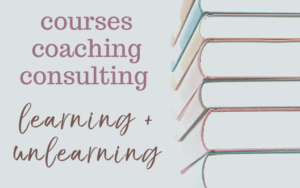 In preparation for a course I’m teaching this spring (“Writing for Social Justice”), I’m lucky to be re-reading Sherman Alexie’s The Absolutely True Diary of a Part-Time Indian. In this powerful YA novel, Alexie describes growing up on the Spokane Indian Reservation and navigating interactions in the rural, white high school.
In preparation for a course I’m teaching this spring (“Writing for Social Justice”), I’m lucky to be re-reading Sherman Alexie’s The Absolutely True Diary of a Part-Time Indian. In this powerful YA novel, Alexie describes growing up on the Spokane Indian Reservation and navigating interactions in the rural, white high school.
Alexie’s narrative reveals much about systemic inequities, colonization, marginalization, and disenfranchisement. I hope students will relate to the main character Junior (Arnold Spirit) and find their way into thinking about central concepts of (in)equity, (in)justice, agency, power, and rights, which we’ll be studying throughout the semester.
I’ve loved this book since I first read it in 2008. That summer, I took The Absolutely True Diary on a multi-day hiking trip. I’d spend each day thinking about the book while hiking and each evening reading in the dim light of remote huts. Being removed from my daily life and with long stretches of time for reading + reflection, I read with a sense of both/and—both true separation from Junior’s experiences and total immersion in the importance of his story and its implicit call to action.
As I’m reading this time, I’m taking notes on major themes/takeaways for social justice, tracing the emotions impacting different characters (heart); key social, cultural, historical, and educational concepts (head); and the potential for action (hands). Here is my list, which is sure to be revised as the semester begins and as I process with students.
I’d love reflections, additions, or suggestions by any of you who have read the book. And if you haven’t read it, I highly recommend it!
Themes/Takeaways for Social Justice:
- Identities are always already intersectional: Race, class, gender, ability, geographic/regional location, nationality, ethnicity, linguistic background, religion, sexuality, and other facets of ourselves—cannot be disentangled or pulled apart, but instead shape all our lived experiences.
- Oppression and privilege are embodied: Our bodies hold histories, legacies, generational knowledges, grief, joy, and even trauma and injustice.
- White people interfere in many ways and typically with/through “good intentions.”
- Oppression is internalized, limiting one’s sense of self-worth and erecting so many barriers/boundaries to jump over—and at every possible level: with one’s self, at home, in one’s community, and outward to the nation-state and international relations.
- Both internalized oppression and internalized privilege/supremacy are pathologies—and with very different historical, social, and material consequences.
- Schooling in the United States is, by design, separate and unequal. While the myth of the meritocracy persists, students encounter entirely different educational experiences—with many students facing what Jonathan Kozol has called “savage inequalities” (or grossly underfunded schools that cheat people out of their futures).
- As a gendered construction, masculinity limits knowledge about and expression of emotions. At the same time, masculinity over-emphasizes/encourages physical dominance (e.g., fist fights and basketball). Men’s friendships, then, are shaped by the suppression of emotional expression—despite the obvious emotional tenor of any/all friendships—and by related performances of heteronormativity.
- We always choose: if not solidarity, then complicity. Though only a few may be bullies, many make the bullying possible. In the words of Desmond Tutu: “If you are neutral in situations of injustice, you have chosen the side of the oppressor.” Or, as Elie Wiesel put it: “We must take sides. Neutrality helps the oppressor, never the victim. Silence encourages the tormentor, never the tormented.”
- Inequities stack up and feed into each other, so that colonialism walks hand-in-hand with systemic racism … and racism with loss of land and resources … and loss of land and resources with poverty … and poverty with dis-ease … and dis-ease with addiction/alcoholism … and addiction with death … and death with grief … and grief with loss of spirit, of hope. This downward spiral (or cycle of socialization) necessitates a total overhaul to break such structurally sustained dehumanization.
- Hope is so important and so complicated! As Alexie writes (in Junior’s words): “I don’t know if hope is white. But I do know that hope for me is like some mythical creature” (51). It’s associated with possibility, mobility, and self-determination. Systems of oppression/colonialism/marginalization work, in part, by shutting down hope. In turn, any movement for justice must involve reclaiming hope.
—
This post is written by Beth Godbee for Heart-Head-Hands.com. Please consider liking this blog on FB and following the blog via email. Thanks!




Although I’ve heard of the book, I’ve never read it; because of this post, it’s now on my to-be-read list. I was looking forward to meeting Alexie at Malaprops Bookstore this past year, but he decided to boycott NC because of HB 1. You may have seen the letter to the NYT about this particular choice by one of the assistants at Malaprops. What else is in your syllabus for this course?
Thanks, Mary! I’m glad to hear you’re planning to read the book. 🙂 I couldn’t figure out how to attach an image to a comment (perhaps that isn’t possible?), so I edited to the post to include my course flyer. It shows the others books we’ll be reading/engaging this spring. We also have two community-based learning partnerships: one with America’s Black Holocaust Museum (ABHM) and the other with the YWCA Southeast Wisconsin’s Racial Justice Program. So, we’ll be reading materials provided by our partners, resources/collections in ABHM’s virtual museum, and ongoing news as well … I’m in the midst of course preparation and getting excited, though also nervous (of course :-)) … All best! ~ Beth